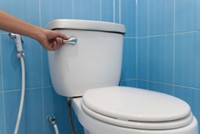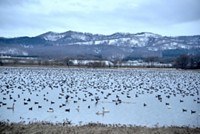Advertisement
Grab your lab coat. Let's get started
Welcome!
Welcome!
Create an account below to get 6 C&EN articles per month, receive newsletters and more - all free.
It seems this is your first time logging in online. Please enter the following information to continue.
As an ACS member you automatically get access to this site. All we need is few more details to create your reading experience.
Not you? Sign in with a different account.
Not you? Sign in with a different account.
ERROR 1
ERROR 1
ERROR 2
ERROR 2
ERROR 2
ERROR 2
ERROR 2
Password and Confirm password must match.
If you have an ACS member number, please enter it here so we can link this account to your membership. (optional)
ERROR 2
ACS values your privacy. By submitting your information, you are gaining access to C&EN and subscribing to our weekly newsletter. We use the information you provide to make your reading experience better, and we will never sell your data to third party members.
Environment
How To Define "Safe" Water?
Water Pollution: Southern California study highlights the limits of bacteria used as fecal indicators
by Steven C. Powell
September 23, 2010

People love to frolic in lakes and rivers, but unfortunately so do a lot of nasty microbes. A nearly 25-year-old national recreational water standard protects us from waterborne pathogens, especially those lurking in fecal waste. But a new study in Environmental Science & Technology (DOI: 10.1021/es101092g) shows that the microbes used to flag fecal contamination can be unreliable.
Water quality depends on upstream inputs, such as urban runoff, agricultural runoff, or wastewater treatment discharges. Since 1986, the Environmental Protection Agency has relied on culturing Escherichia coli and Enterococcus bacteria to spot feces contamination in these waters. A positive test for feces usually indicates the presence of pathogens that cause illness, such as stomach disorders and respiratory infections.
But in recent years researchers have found that the gut bacteria used as feces indicators can survive outside of our digestive tracts in other environments. These "naturalized" bacteria could lead to false positives in culture tests and thus make them inaccurate fecal indicators.
Stanley Grant, a professor of environmental engineering at the University of California, Irvine, and colleagues wanted to develop a better quantitative understanding of how water quality markers—including fecal indicator bacteria—changed along inland urban waters. The team decided to study a wastewater treatment plant stream that feeds into the Santa Ana River in Southern California. During the dry season, the Santa Ana receives about 85% of its flow from disinfected wastewater.
They collected water samples at various spots, including directly from the wastewater discharge pipe and within the Santa Ana itself, both up- and downstream from where the wastewater flows into it.
The researchers cast a wide analytical net in assessing water quality, including the traditional culture test for E. coli and Enterococcus, quantitative polymerase chain reaction assays for Enterococcus and human-specific HF183 Bacteroides, and measurements of chemical markers for sewage and wastewater such as ethylenediaminetetraacetic acid.
While samples straight from the wastewater discharge pipe were very low in Enterococcus according to the standard EPA culture test, the levels rose as the water flowed downstream: "Water emerged from the wastewater plant disinfected, and then within 500 meters downstream the concentrations exceeded the regulatory criteria," Grant says.
The team concluded that the riverbed served as a source of naturalized Enterococcus. The bacteria essentially sounded the alarm for feces that weren't there, says Grant.
Ecologist Richard L. Whitman of the U.S. Geological Survey in Porter, Indiana, calls the study "really important work." A recent court order requires the EPA to revise its recreational water regulations by 2012. And this study adds important data for finding better standards, Whitman says, by better defining the disconnect between fecal indicators and actual human pathogens.




Join the conversation
Contact the reporter
Submit a Letter to the Editor for publication
Engage with us on Twitter